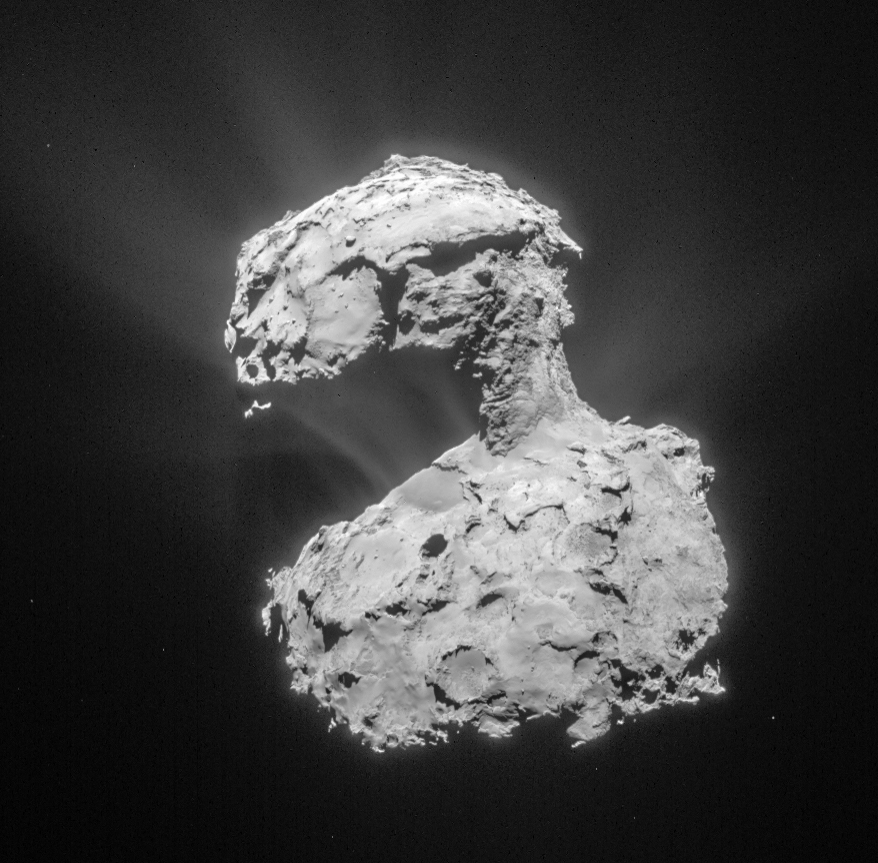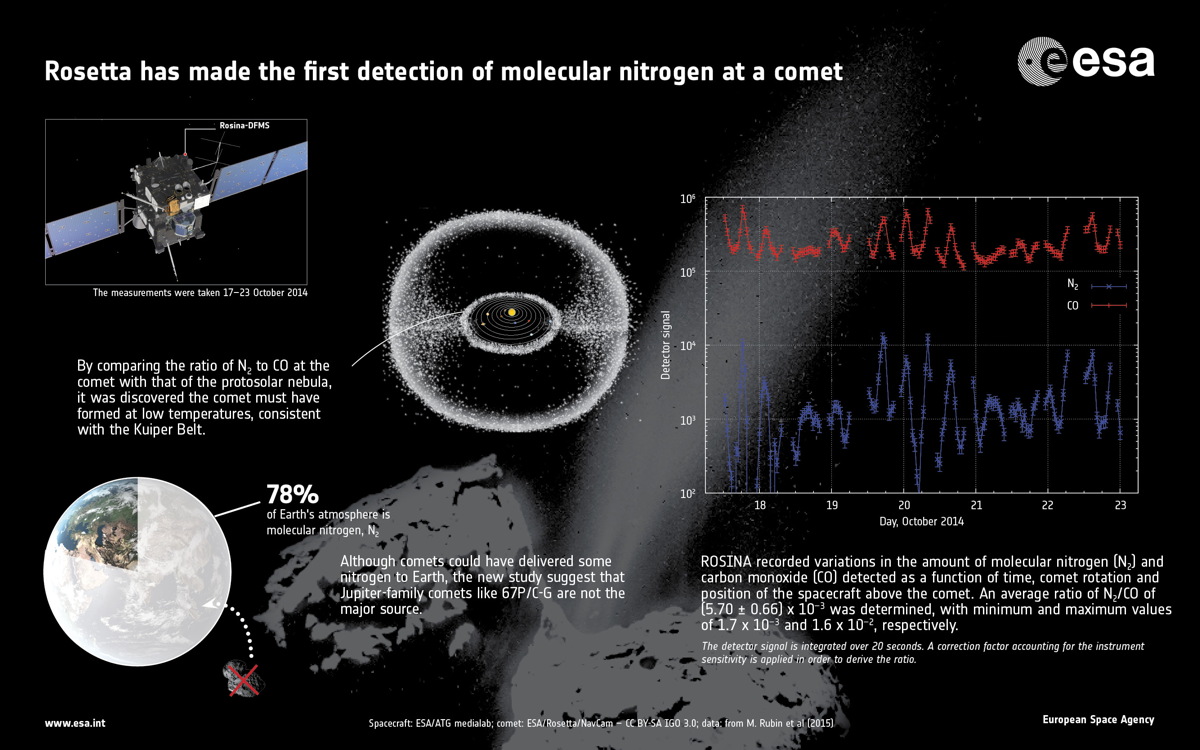Rosetta Spacecraft Makes Nitrogen Discovery on Comet

A peculiar mix of molecular nitrogen on the comet target of Europe's Rosetta spacecraft may offer clues to the conditions that gave birth to the entire solar system.
Molecular nitrogen was one of the key ingredients of the young solar system. Its detection in Comet 67P/Churyumov–Gerasimenko, which Rosetta is currently orbiting, suggests that the comet formed under low-temperature conditions (a requirement to keeping nitrogen as ice), according to officials with the European Space Agency.
Since nitrogen is also found in planets and moons in the outer solar system, Rosetta's discovery implies that 67P's family of comets formed in the same area, ESA said. [Comet Quiz: Test Your Cosmic Skill]
"Its detection is particularly important since molecular nitrogen is thought to have been the most common type of nitrogen available when the solar system was forming," ESA officials wrote in a statement.
"In the colder outer regions, it likely provided the main source of nitrogen that was incorporated into the gas planets," ESA added. "It also dominates the dense atmosphere of Saturn's moon Titan and is present in the atmospheres and surface ices on Pluto and [on] Neptune's moon Triton."
While nitrogen has been found on comets before, this is the first time it was detected by itself, as molecular nitrogen. Previously, nitrogen was detected inside compounds such as ammonia or hydrogen cyanide.

Weird ratio
The Rosetta spacecraftdetected the molecular nitrogen using the probe's ROSINA instrument (Rosetta Orbiter Spectrometer for Ion and Neutral Analysis) between Oct. 17 and 23, 2014. At the time, Rosetta was orbiting just 6.2 miles (10 kilometers) from Comet 67P's center.
Get the Space.com Newsletter
Breaking space news, the latest updates on rocket launches, skywatching events and more!
But the finding also carried a surprise: The ratio of molecular nitrogen to carbon monoxide in the comet was 25 times less than what was expected from models of the early solar system. (Carbon monoxide is important for the measurements, because the ice that trapped the molecular nitrogen likely formed at similar temperatures as those needed to trap carbon monoxide.)
Scientists said the unexpectedly low ratio resulted from the way ice is formed at extremely low temperatures. Perhaps the molecular nitrogen was trapped inside "cagelike" water-ice called clathrates, at temperatures between minus 418 Fahrenheit and minus 364 Fahrenheit (minus 250 Celsius and minus 220 Celsius), ESA said.
Alternatively, scientists suggest the ice could have trapped the molecular nitrogen at a temperature of roughly minus 423 F (minus 253 C). This would make sense if 67P had been in the same region of the solar system as Triton and Pluto, which both have nitrogen in their ices.
Regardless of the origin story, 67P would have released the nitrogen as it drew closer to the sun, which caused the comet's ice to melt. This could explain the low ratio, scientists said.
The results were published in the journal Science and led by Martin Rubin, who is with the space research and planetary sciences division of the University of Bern in Switzerland.
Follow Elizabeth Howell @howellspace, or Space.com @Spacedotcom. We're also on Facebook and Google+. Original article on Space.com.
Join our Space Forums to keep talking space on the latest missions, night sky and more! And if you have a news tip, correction or comment, let us know at: community@space.com.

Elizabeth Howell (she/her), Ph.D., was a staff writer in the spaceflight channel between 2022 and 2024 specializing in Canadian space news. She was contributing writer for Space.com for 10 years from 2012 to 2024. Elizabeth's reporting includes multiple exclusives with the White House, leading world coverage about a lost-and-found space tomato on the International Space Station, witnessing five human spaceflight launches on two continents, flying parabolic, working inside a spacesuit, and participating in a simulated Mars mission. Her latest book, "Why Am I Taller?" (ECW Press, 2022) is co-written with astronaut Dave Williams.









